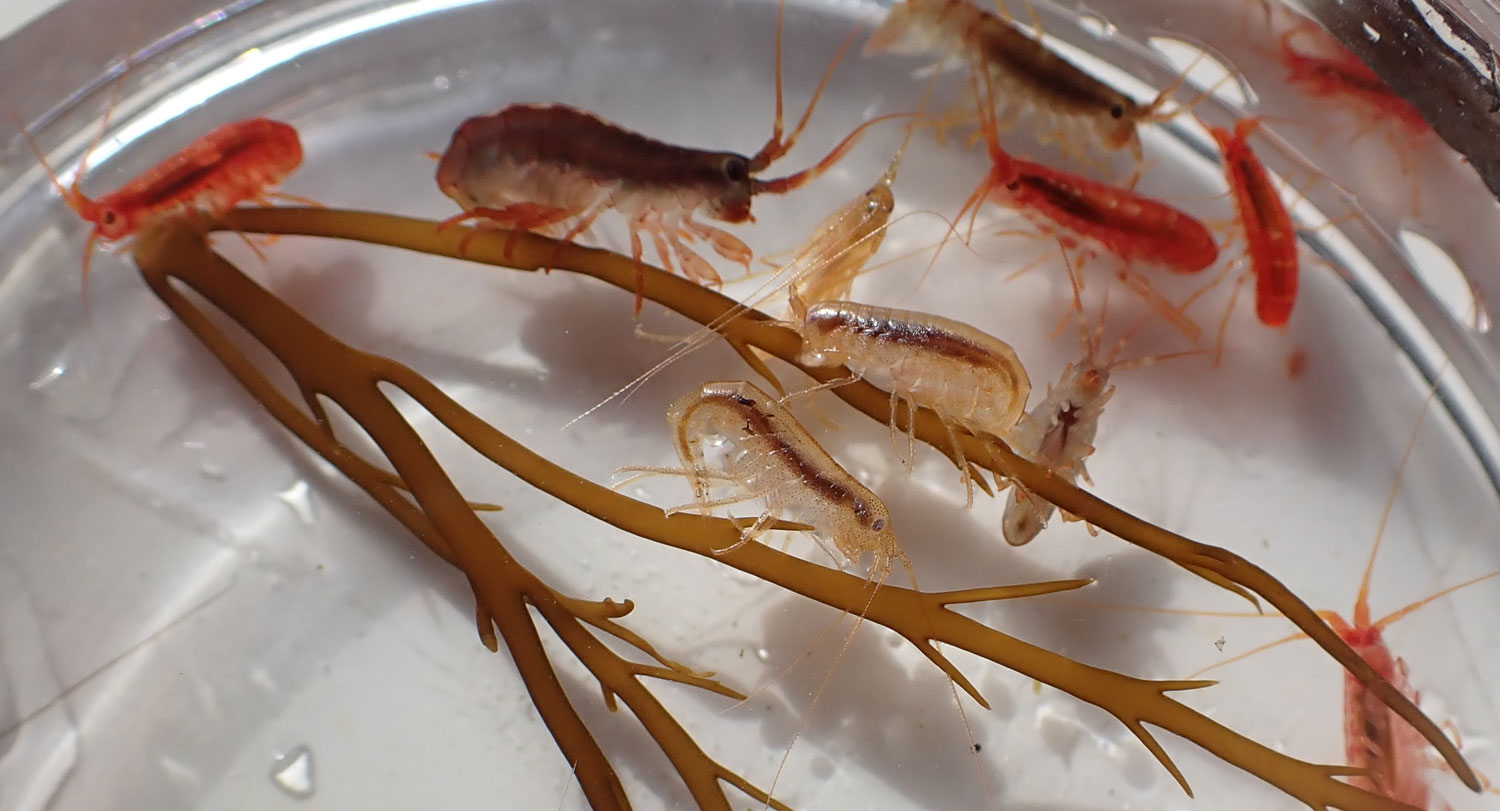 How do you get to Crustaceanland? That is the question our group is trying to answer this week as we gather amphipods for our experiment. Here on the Western Antarctic Peninsula, our study organisms can usually be found hiding amongst the large seaweeds that dominate the benthos of shallow water communities. When we want to collect amphipods, our divers will cut the base of the seaweed and gently float it into a fine mesh bag. The amphipods we want will stay on the seaweed as long as we don’t jostle the alga too much. Voilà, we have just caught some amphipods. Easy-peasy. Mission accomplished… or is it? We may have amphipods in a bag but there are still several more steps that need to be completed before we have amphipods that are usable.
How do you get to Crustaceanland? That is the question our group is trying to answer this week as we gather amphipods for our experiment. Here on the Western Antarctic Peninsula, our study organisms can usually be found hiding amongst the large seaweeds that dominate the benthos of shallow water communities. When we want to collect amphipods, our divers will cut the base of the seaweed and gently float it into a fine mesh bag. The amphipods we want will stay on the seaweed as long as we don’t jostle the alga too much. Voilà, we have just caught some amphipods. Easy-peasy. Mission accomplished… or is it? We may have amphipods in a bag but there are still several more steps that need to be completed before we have amphipods that are usable.
After the seaweed and all of its amphipods have been placed inside of a mesh bag, the bag needs to be transported back to station. This is commonly done by placing the bag inside of a bucket with freshly collected seawater and quickly boating our way back to station. Next, we transport the buckets into our aquarium where the bags will float in a large aquarium tank.
Okay, now we have a bag full of seaweed and amphipods back at station, but how do we get the amphipods off of the seaweed? We dunk them in water. Repeatedly like Chuck is doing here:

I know this answer might seem very simple, but its true. We clip the mesh bag onto the aquarium tank to keep it open. Then, we cut small pieces of the alga off and dunk it repeatedly in an empty mesh bag that is submerged in the tank. Chuck in the picture above is demonstrating this process. The amphipods don’t like to be taken out of the water. When the seaweed is dunked back into water, the amphipods will swim away from the seaweed. We repeat this process until all of the amphipods have been removed from the seaweed.
When we are finished, we are left with multiple trays filled with seawater and amphipods, but our job isn’t done yet. Dunking the seaweed removes all of the amphipods that were attached to alga at the time of collection. However, we are only interested in a few specific species. We need some way of sorting tiny amphipods from hundreds of other amphipods.

We sort our amphipods by pipetting the individuals we want out of the trays. We pour small amounts of the amphipods into a tray that we place in a sorting table that helps keep the temperature inside of the tray stable. From there, we look in the trays to find the specific amphipods we want. How we distinguish between the different species can be more of an art than a science. One of the species we want this species, Gondogeneia antarctica, is typically darker in color with short antennae and are usually more active than other species. However, other species, like Djerboa furcipes, are a little more complex. That species is typically a light cream color and has long antennae, but here is where the problem lies. Several other species also look similar to this. It can be very difficult to identify the correct species. It could be something small like the color, width, antennae length, or even behavior that could alert you to that amphipod being the right species.
It’s a process that we repeat over and over again until we have thousands of amphipods of our desired species. That’s a quick summary of how our team has spent the last couple of weeks, and how we have found our own way into Crustaceanland.
A haiku for your consideration:
Amphipods in bags
Need to be sorted quickly
Or they will be sad